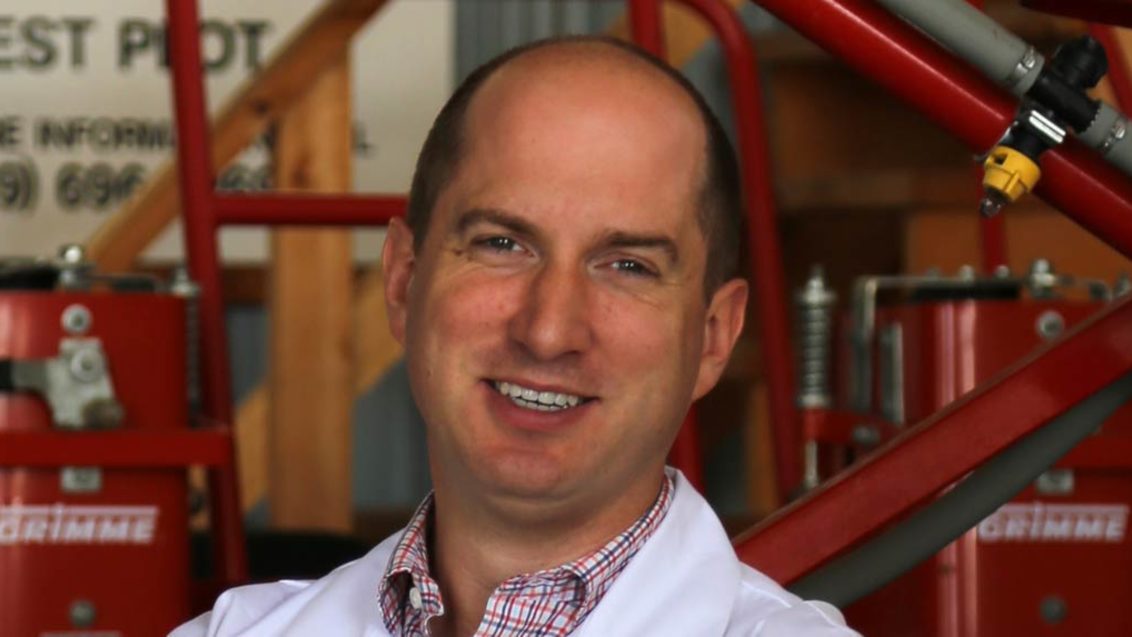Seedcare Institute interviews - Doug Baumann

Interview of Doug Baumann, Head Seedcare Institute Canada Highlights from the 2018 soybean season in Canada
Can you talk to me about the season status of soybean in Canada?
“The soybean treating season in Canada is very long, nearly 200 days from start to finish. The reason is that most treaters are forced to stop treating over the winter months because it’s not advised to perform treatment on frozen seeds. This means the treating season begins in November and some operators treat right up to May. We expect to see a flurry of activity in the coming weeks once the temperature warms. As of the middle of April, most of Canada is still covered in snow.”
What makes treating soybeans complicated? What are the stages of soybean treatment?
“The most sophisticated equipment and slurries are used by seed companies with a large volume of seed to process, high quality standards, and the desire to include as much technology ‘in the bag’ as possible. These companies use a variety of Seedcare products and The Seedcare Institute customized slurries and solutions to meet their needs.”
“One big change in the past few years has been the launch of long life inoculants, which are applied at very high slurry rates and can result in seed that is wet or sticky going into the bag. Syngenta has been able to demonstrate the flexibility of our offer using the PAS model (Products-Application-Services) to help customers who want to adopt this new technology, for example by developing new Seedcare slurries at reduced volumes and by benchmarking the effect inoculants have on the handling and appearance of treated seed.”
What can you say about the evolution of automatization? (for the farmers)
“We are in the middle of a very exciting time in soy seed treatment because soybean hectares are rapidly expanding across Canada. This means new growers not used to handling soybean seeds are making fresh purchase decisions based on what fits their farm and rotational crops. The result is different seed treatment business models across the country and some very unique service and equipment offers in the marketplace.”
“Our Canadian Seedcare Specialists and both North American Seedcare Institutes have played an active role in this evolution, monitoring the application quality of different treating equipment and advising their manufacturers of the result. This collaborative behavior is aligned with our corporate ambition.”
What challenges do your clients have, and how do you tackle them?
“Weather is always a challenge, and specifically the delays it can introduce into a treating operation. Reliably and economically treating seed on demand would go a long way to helping our seed company customers. For this reason, The Seedcare Institute has been investigating techniques to depress the minimum treating temperature in soy. Seed that is -5 C is the current lower limit for good quality treatment. We would like to push that to -15C over time.”
What diseases and insects do farmers have to deal with?
“Canada is over 5,500 km wide and growers deal with an incredible variety of biotic stresses. Pythium is the common denominator in soy growing areas, a pervasive pathogen on many acres. Phytophthora is also top of mind and we see customers requesting Seedcare offers with enhanced protection.
“Aphids are the driver insect in western Canada, home to most of the new soybean hectares I mentioned earlier. The recent driver pest in eastern Canada has been the seed corn maggot and bean leaf beetle. The Seedcare Institute is supporting the launch of FORTENZA® seed applied insecticide on soybean through a long-standing collaboration with our Field Development team. In this project, the The Seedcare Institute provides the digital tools necessary to capture amazing field and terrarium studies in ‘customer ready’ quality.”
What are your main challenges during this season?
“Syngenta Canada is fortunate to have a rich pipeline with over a dozen new products across all indications in the final countdown to launch. That means the largest production run in a decade and largest logistical effort in memory, all to deliver products to more than 200 research sites. This was a huge challenge that involved colleagues from sites across North America and Europe.”
What are the main highlights of this spring treating season?
“The Seedcare Institute has worked closely with the technical staff of key accounts since its founding in 2016. This gives a great view into how the season is going because it increases the number of touch points the SCI has with key accounts. In one case the team is justifiably proud of, The Seedcare Institute handed off a new suite of soy slurry recipes to a key account last fall. These had been requested to enhance Phytophthora protection using additional APRON® XL to supplement the metalaxyl-m rate in our premixes. It’s very rewarding to develop these from bench scale at The Seedcare Institute, to a customer lead 15,000 kg manufacturing pilot, and finally the national commercial launch of the recipes across many conditioning sites.”
